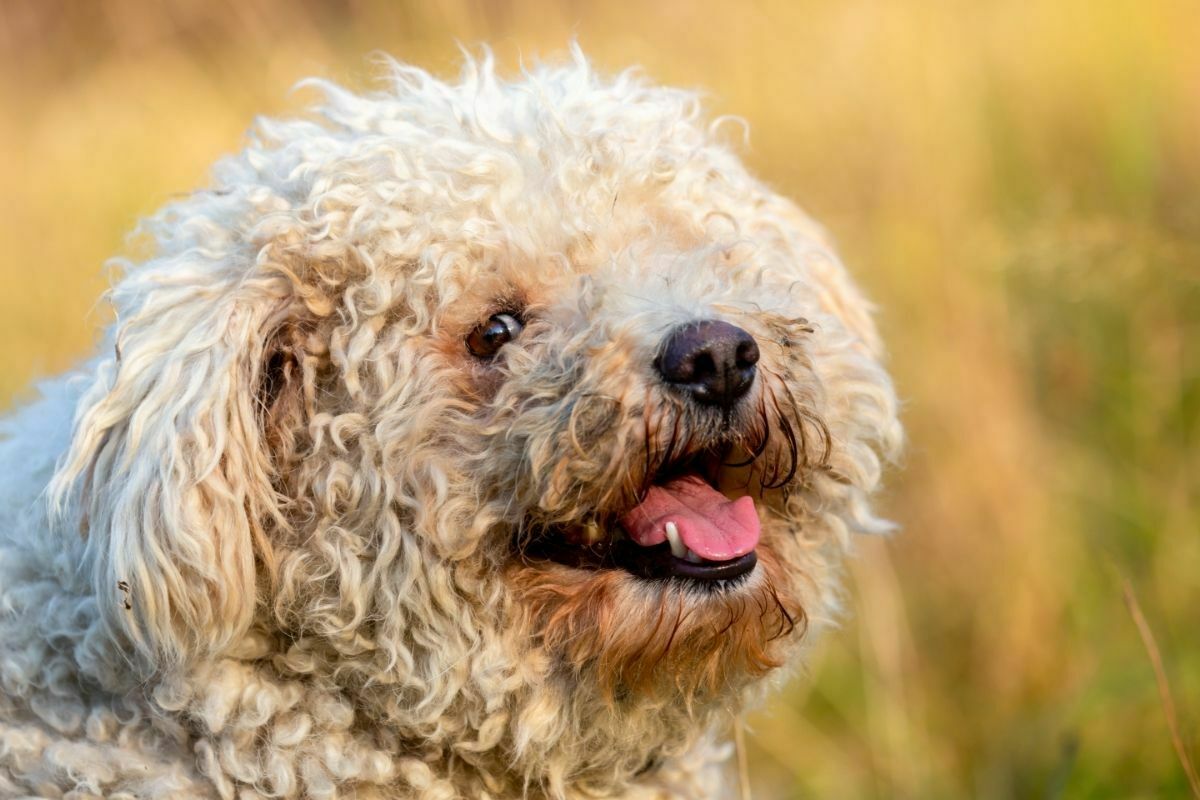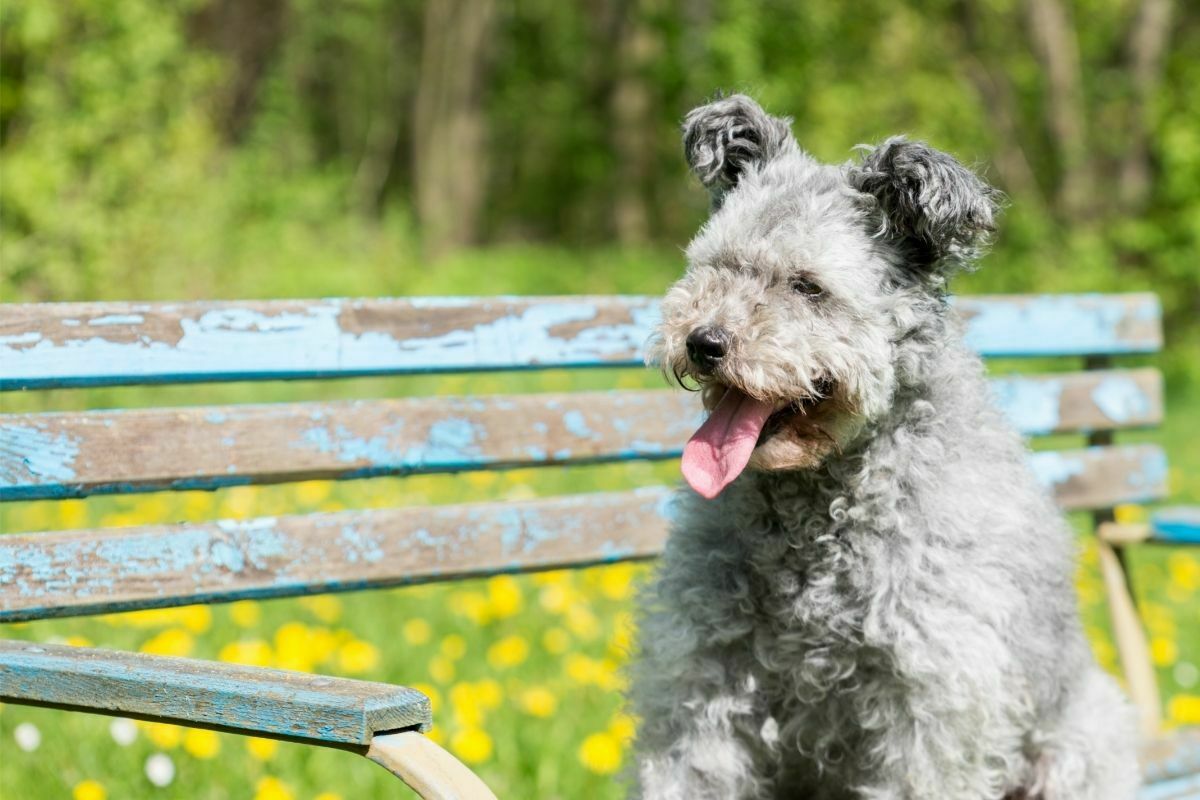A lot of people would love to be a dog owner, however, for some people the thing that holds them back is the fact they are allergic.
However, there is a way to get around this, hypoallergenic dogs are the ideal solution as the chances of an allergic reaction are reduced.

The Pumi is a small to medium-sized sheepdog that is native to Hungary. You may be considering this lovable dog as your next pet.
However, if you have allergies, you need to know whether this breed of dog is hypoallergenic.
In this article, we will cover whether Pumi are hypoallergenic. So keep on reading to find out.
What is a Pumi?
The Pumi breed originates from Hungary and has been around since the Middle Ages. They were originally bred to herd sheep and protect their flock.
The Pumi is known as a hard-working dog with a strong desire to work. This makes it a good choice for those who want a dog that can do many things. It also means that the Pumi is very loyal to its owners.
Pumi is ideal for anyone who wants to go out walking and be active. However, due to their strong hunting instincts, the Pumi is one of the best breeds for protection.
They have an instinctual urge to protect their family and property. This is why they make excellent guard dogs. They are also very protective of their families and friends.
They will defend their family against intruders and strangers.
Overall, they are perfect for active seniors, or families with small children.
Are Pumi Hypoallergenic?
If a dog is hypoallergenic, then you shed little to no hair. When it comes to the Pumi, they rarely shed any hair. As a result, this makes this breed of dog hypoallergenic.
The reason why they don’t shed much hair is due to their curly and wavy coat, this causes little fallout. Their coat has a corkscrew-like appearance, but it is very easy to look after and maintain.
However, if you notice mass hair fallout from your Pumi’s coat, this means that they are unwell, and you need to take them to a vet.
Just like with any dog, they need to be kept healthy and loved, otherwise this will affect not only the dog but also affect their coat as well.
The Coat Of A Pumi

The coat of a Pumi is seen as incredibly easy to look after. However, it does require you to brush their coat every couple of weeks.
This is to stop the hair from matting together and restore the tufts, which are character traits of this breed of dog.
Pumis’ coats are unique and distinguishable. They have two layers, one softer than the other. The outer layer is called the guard or guard hair. This is the thicker layer of fur that protects the undercoat.
The undercoat is made up of three layers; the innermost layer is called the pelt. This is the softest part of the coat and is responsible for keeping the Pumi warm in cold weather.
Next is the intermediate layer, which is called the mid-coat. This is the densest layer of fur on the body. Finally, the outer layer is the guard hair again.
Their fur is curled into a spiral shape. Pumis are known to be born with a grayish-brown coat. As they grow older, their coats gradually lighten up until they reach a darker shade.
A Pumi coat needs regular cleaning, otherwise, it gets dirty. Wetting it down and letting it dry naturally keeps it clean. Trimming and stripping the coat also helps keep it neat.
If you’re doing these things yourself, make sure to get help if needed.
This breed’s coat requires human intervention to keep it under control and prevent it from tangling or matting excessively.
Regular brushing is necessary to maintain the desired appearance and texture. Regular brushing also ensures that the dog remains hypoallergenic.
Do Pumis Shed At All?
Pumis do shed, although the amount of shedding varies between each individual dog. Some may shed more than others. It is important to remember that the Pumi sheds less than many other breeds.
This is because of its curly coat. The Pumi sheds mainly during the summer months. During winter, the Pumi sheds very little.
However, overall, Pumi is seen as a low-shedding breed of dog. The time when you notice the most shedding is when you are brushing the coat.
Although, even then the hair will collect on the brush, so it won’t be too bad. It is recommended that you brush your Pumi every 2 to 3 weeks. This once again will minimize any chances of matting forming on your dog’s coat.
When it comes to brushing your dog, we would suggest doing it outside. This way, you can avoid getting any hair stuck in your house, which may cause you to have an allergic reaction.
How To Brush Your Pumi Properly
Brushing your Pumi properly is essential to maintaining the health and beauty of your dog. You should brush your dog at least twice a month. Make sure that you brush the coat thoroughly.
Start by using a wide brush, then move on to a narrow brush.
When it comes to brushing your Pumi, there are several ways you can do it. We recommend starting with a wide brush.
Using a wide brush allows you to cover all areas of your dog’s coat quickly. After you finish brushing, give your dog a thorough bath. This will remove excess dirt and debris from the coat.
After brushing, wet the entire coat and allow your Pumi to air dry. This will then cause the tufts to retake their classic shape.
Final Thoughts
Pumis are very friendly pets that make wonderful companions for families. They are great with children and are easy to care for. Their coats require minimal maintenance, and they do not shed much hair.
As a result, Pumis are hypoallergenic dogs, and they are easy to groom. Some brushing and bathing may be required to keep their coat looking perfect.
Yet, overall, any family would love to have a Pumi as part of the family.
